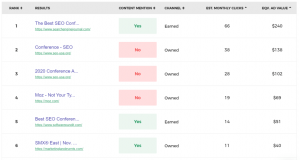 Small businesses face a range of diverse challenges in their day to day operations. However, the greatest challenge that is common in all small businesses is the lack of enough funding. Other small businesses may be having enough cash to fund their short-term working capital needs, but managing the how the cash flows in and flows present a big challenge to them. To overcome these challenges, an understanding of how funds flow within your small business and how to manage the flow of funds is necessary.
Small businesses face a range of diverse challenges in their day to day operations. However, the greatest challenge that is common in all small businesses is the lack of enough funding. Other small businesses may be having enough cash to fund their short-term working capital needs, but managing the how the cash flows in and flows present a big challenge to them. To overcome these challenges, an understanding of how funds flow within your small business and how to manage the flow of funds is necessary.
As your business grows, its financial demands also evolve with it and with the changing funding needs come new challenges. The first challenge is the sudden upsurge in your incomes from your operations as they grow in number due to high customer demand and exponential sales growth. For most small businesses, they operate using very basic accounting tools such as customized excel spreadsheets or QuickBooks. As the number of activities your small business handles increase, the number of financial transactions also increase; resulting to a need for a more complex accounting and records keeping system.
From a previously relaxed set-up where you could personally handle all the finances for your small business, you find yourself in a situation whereby there are several parties involved in handling cash for your business due to the large number of daily financial transactions. At this point stronger internal control systems are needed in order to prevent pilferage of funds and other company resources. To enhance transparency and prevent fraud, you should acquire an automated accounting system handle your financial transactions. The system should be fool proof with adequate checks and balance sin order to ensure that only authorized payments are made and all incomes are recorded.
The other challenge most small businesses face is the lack of enough funding to finance their day to day  activities as they expand. Unlike the first category above who have a lot of money that they are struggling to manage effectively, this category of small businesses are struggling to be efficient enough in order to maximize the use of the little funds they have available. Their challenge is compounded by the fact that accessing loans from commercial banks is very difficult; and even when they are able to access the loans, finding the best rates for small business loans is a challenge too. To this second category of small businesses, realigning their internal operations and effective cash flows management can help them sail through this growth phase efficiently.
activities as they expand. Unlike the first category above who have a lot of money that they are struggling to manage effectively, this category of small businesses are struggling to be efficient enough in order to maximize the use of the little funds they have available. Their challenge is compounded by the fact that accessing loans from commercial banks is very difficult; and even when they are able to access the loans, finding the best rates for small business loans is a challenge too. To this second category of small businesses, realigning their internal operations and effective cash flows management can help them sail through this growth phase efficiently.
Working capital needs take priority when it comes to cash flows management for small businesses struggling financially. Short-term debts and liabilities have to be repaid within the stipulated time periods to avoid being declared bankrupt and your business being closed down. To ensure that all your short term financial obligations are well met, you need to balance the way money comes in and how it goes out of your business. Top at the list of your consideration is to have the days it takes to collect receivables from debtors to be shorter than the days it takes to pay creditors their dues. That way you will always have cash in hand to settle your short term obligations when they fall due.
Another cash flow management tool to use is to apply the just in time model in your business value chain management. This involves buying inputs only when you have a coinciding customer demand; and helps in reducing the amount of inventory you need in your business. Inventory costs money and the more of it you have lying idle in your small business, the more money you have lying idle instead of putting it in other better investment. A challenge with the just in time model is that you have no control over your supplier and they may not always have ready inputs for you when you need them; hence the need to have a minimum level of inventory referred to as the economic order quantity.
 Small businesses can also apply the pre-payment model to get customers to pay for the goods or service before they are delivered. This helps you to build a cash buffer necessary to settle creditors’ bills when they fall due as well as help you in funding the procurement of your inputs. In addition, you can give discounts to your customers in order to encourage them to pay their receivables much faster.
Small businesses can also apply the pre-payment model to get customers to pay for the goods or service before they are delivered. This helps you to build a cash buffer necessary to settle creditors’ bills when they fall due as well as help you in funding the procurement of your inputs. In addition, you can give discounts to your customers in order to encourage them to pay their receivables much faster.
In summary, small businesses face different financial challenges and they need to approach their challenges from the perspective of whether they are having a financial shortage, financial management challenge or both.
Business & Finance Articles on Business 2 Community(41)
Report Post








